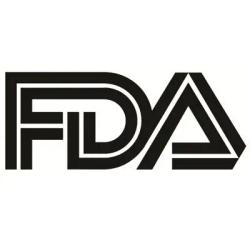
OR WAIT null SECS
AI Scribes Reduce Physician Burnout Within 30 Days, With Lee Schwamm, MD
Physicians experience significant challenges with increasing administrative burdens impacting patient care. Study shows AI scribes can help reduce burnout.
A new multicenter study highlights the significant potential of artificial intelligence (AI)–powered ambient clinical documentation tools, also known as AI scribes, in reducing burnout among clinicians burdened by administrative tasks.1
The study, conducted across 6 academic and community-based health systems in the United States between February 1 and October 31, 2024, evaluated the impact of an ambient AI scribe platform called Abridge on self-reported physician burnout and related outcomes. A total of 263 ambulatory care physicians completed surveys before and after 30 days of using the tool. In total, the study included 131 primary care practitioners (49.7%), 232 attending physicians, and 168 academic faculty (63.9%).1
Clinician burnout, driven by rising administrative demands, electronic health record (EHR) documentation, and working after-hours or “pajama time,” remains a pressing challenge in medicine, exacerbated by clinician shortages and an aging, chronically ill population.
“Over the last…10 years, the administrative burden of practicing medicine has increased exponentially,” investigator Lee Schwamm, MD, from Yale New Haven Health System, told HCPLive during an interview.
Back when Schwamm did his training, it was all handwritten paper charts and films projected on the whiteboard to look at radiology images. Notes tended to be relatively short and did not capture the full picture of care. With the arrival of modern electronic health records, this transactional system was centralized.
“What that means is that many things [that a] physician did not use to do themselves but would delegate to others are now on the task list of the physician,” Schwamm explained. “[Now most of the] visit is spent with the physician [using] their hands on the keyboard and looking at the screen, as opposed to looking at the patient. It’s an urgent issue, and many providers describe burnout and this administrative burden in particular as a reason to think about leaving the field of medicine altogether.”
AI scribes aim to reverse this shift by automatically listening to clinician–patient conversations, extracting key details, and generating structured medical notes for clinician review. According to Schwamm, earlier versions of these tools offered limited utility, but there have been “dramatic improvements” in documentation accuracy and usability in recent large language models.
Investigators noted that the results were striking: the proportion of physicians reporting burnout (standard cutoff of ≥ 3) dropped from 51.9% to 38.8% after just one month of use (difference, 13.1 percentage points), a substantial reduction rarely seen in interventions targeting burnout (odds ratio [OR], 0.26; 95% CI, 0.13 - 0.54; P <.001). A post-hoc severity analysis including physicians with severe burnout (cutoff ≥ 4) showed a significant drop in severe burnout from 18.4% to 12.2% (difference, 6.2 percentage points; P =.01).1
Secondary measures also improved significantly, including reduced documentation task load (mean difference, 2.64 points; P <.001), greater ability to focus on patients (mean difference, 2.64 points; P <.001), improved perceived clarity of notes for patients (mean difference, -0.44 points; P =.005), less time spent documenting after hours (mean difference, 0.90 hours; P <.001), and increased flexibility to accommodate urgent patients (mean difference, 0.51 points; P =.02).1
Clinician burnout if becoming more and more recognized. At the 2025 SDPA Annual Summer Dermatology Conference, HCPLive spoke with Hope Cook, PA-C, a physician associate from Georgia Skin Cancer & Aesthetic Dermatology and author of the new book, Healing Clinician Burnout: How to Revive Your Life and Career.2 During her talk, she introduced the “CRP” framework to combat clinician burnout realistically.
“I just want to emphasize there's so many things that we try to do to reduce burnout, and most of them don't work,” Schwamm said.1 “The fact that in 30 days this intervention had a dramatic impact on the reduction of burnout is really wonderful. It's a really positive message, and I think it's one that will make this application almost table stakes for healthcare systems in the future.”
A relevant disclosure for Schwamm includes serving as a volunteer member of a research advisory committee for Abridge to facilitate the use of ambient data for clinical researchers.
References
Olson KD, Meeker D, Troup M, et al. Use of Ambient AI Scribes to Reduce Administrative Burden and Professional Burnout. JAMA Netw Open. 2025;8(10):e2534976. doi:10.1001/jamanetworkopen.2025.34976
Cook H. Discussing Ways to Help Clinicians Facing Career Burnout, with Hope Cook, PA-C. Hcplive.com. Published June 27, 2025. Accessed October 27, 2025. https://www.hcplive.com/view/discussing-ways-help-clinicians-facing-career-burnout-hope-cook-pa-c

